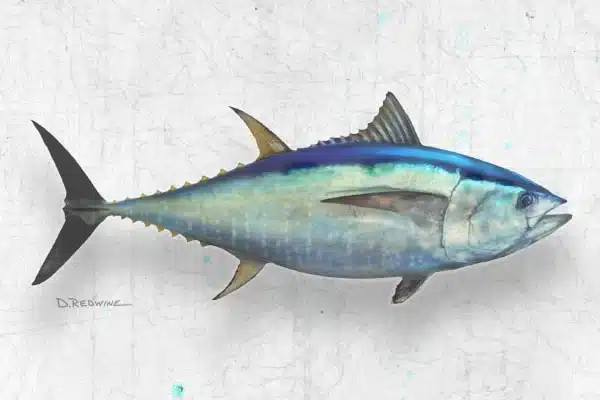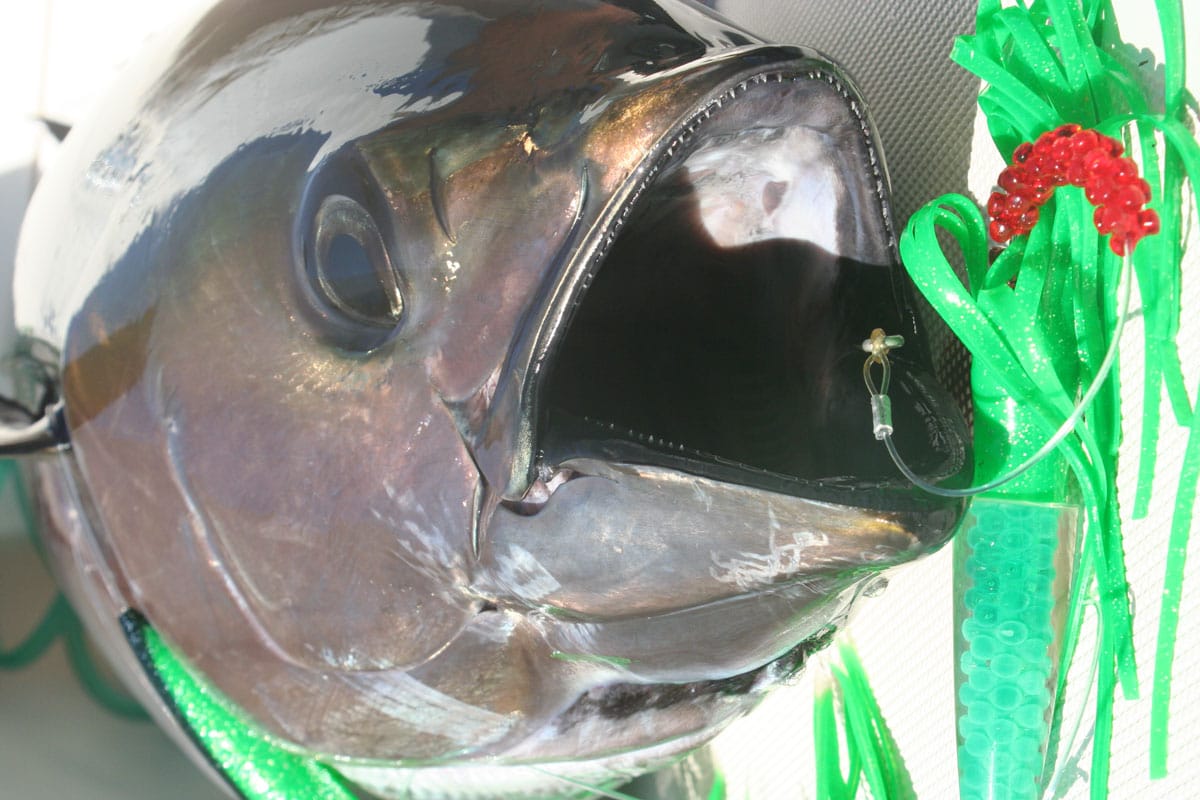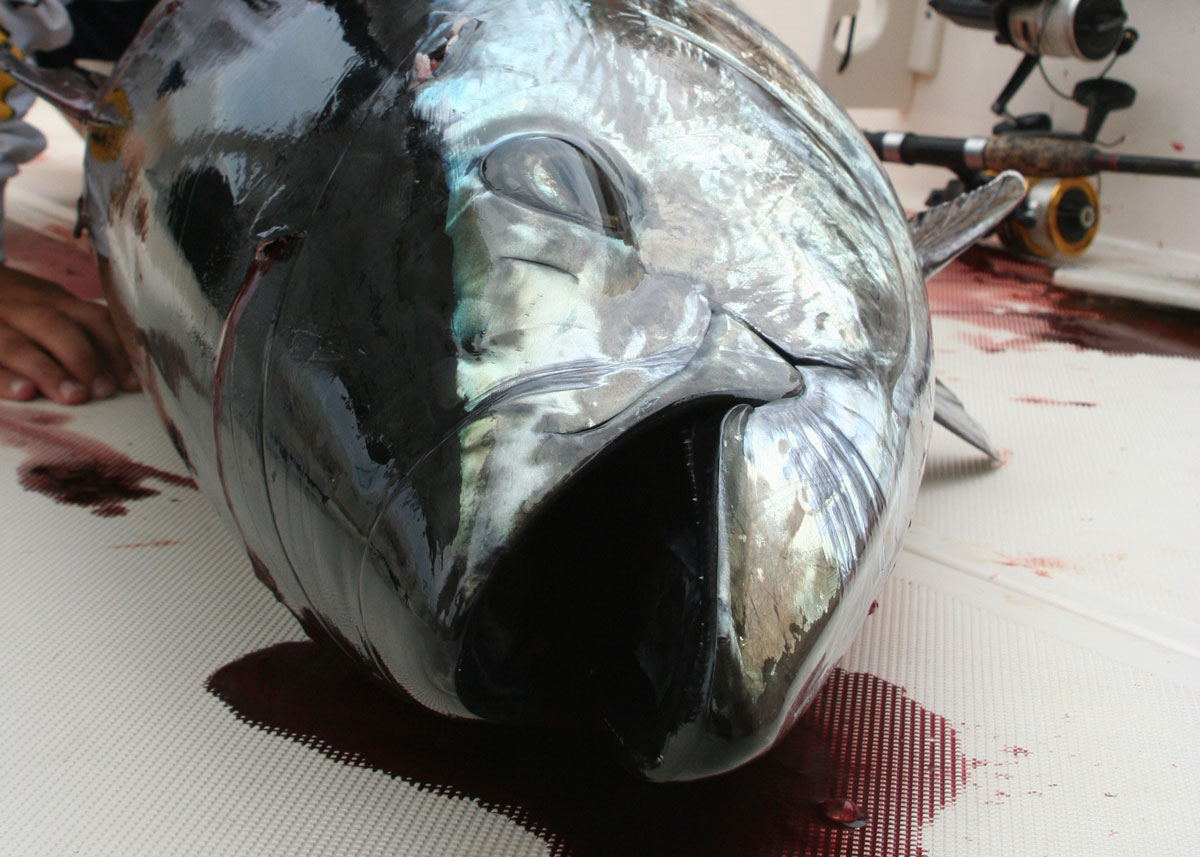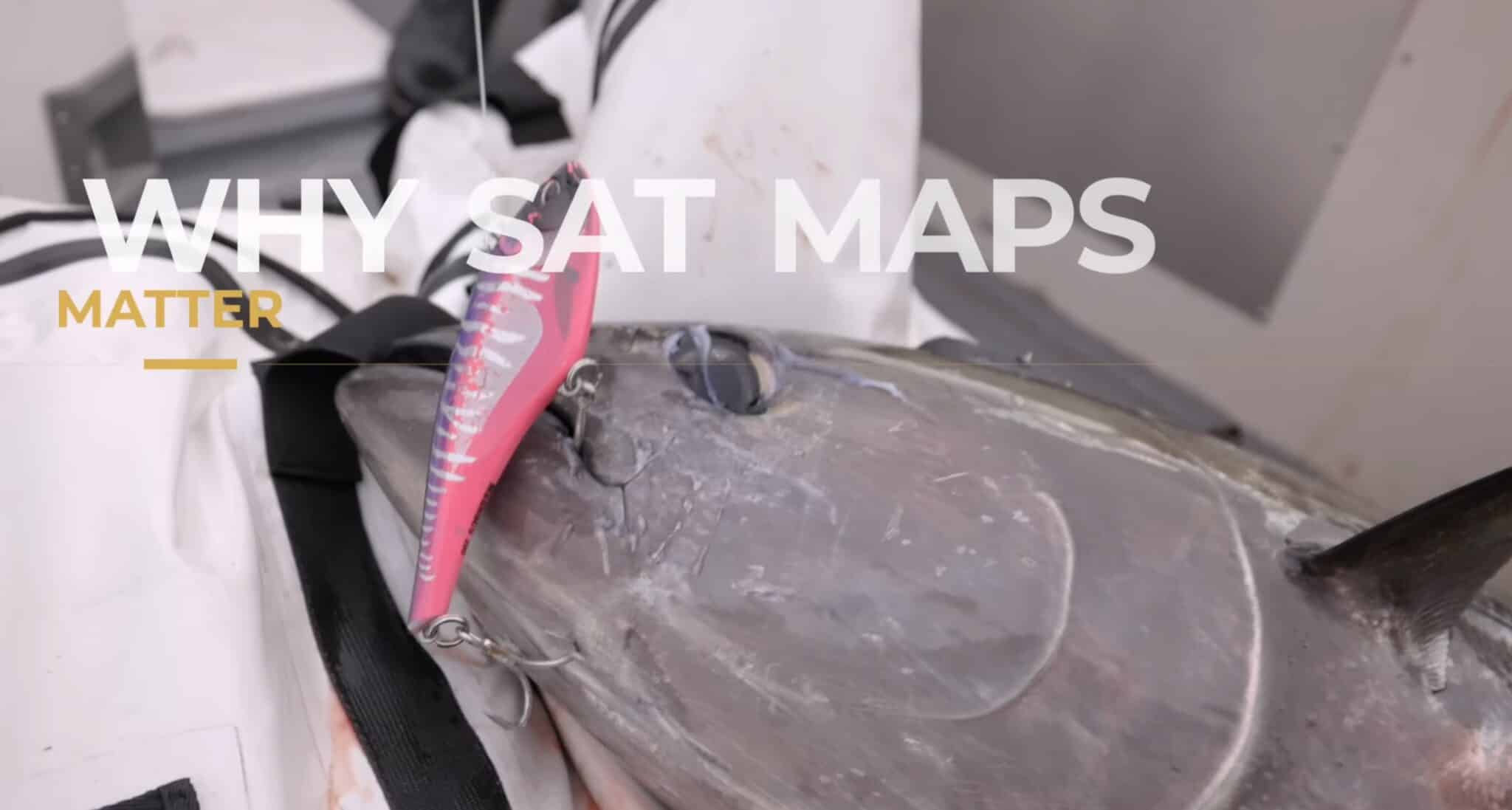Description
The Pacific bluefin tuna is found in the northern Pacific and migrating to the south Pacific. In the past, this species was combined with T. thynnus which is now described as the Atlantic bluefin. Extremely popular with sportfishermen, the bluefin has enriched the sportfishing world since the beginning accounting for record-sized fish and very good eating, especially as sushi and related dishes. Bluefin are targeted using live and dead bait or lures via a wide range of presentations. Extremely strong, bluefin require matching tackle to their size to be successful at landing them.
Ideal Conditions for Pacific Bluefin Tuna
SatFish maps show you where to find ideal conditions for Bluefin Tuna:

- Sea Surface Temperature:
62-73°F / 16-23°C
(64-68°F / 17-20°C is ideal) - Water Color / Chlorophyll:
Clean green to blue, 0.00 – 0.3 mg/m3 - Bathymetry:
Pacific BFT can often be associated with seamounts and ridges where upwelling occurs, attracting congregations of baitfish. Temperature and chlorophyll breaks are also important indicators of where bluefin are found.
Pacific bluefin tuna are fast, powerful predators that travel long distances across the Pacific Ocean. They prefer cooler waters and are often found near deep offshore structures, coastal drop-offs, and temperature breaks where nutrient-rich upwelling attracts baitfish like anchovies, sardines, and mackerel. Bluefin tuna hunt along the edges of temperature breaks and current lines where baitfish gather tightly, especially from spring through fall. They can appear in large schools and are aggressive feeders, but can also be selective depending on conditions. When you find clean, cooler water with strong currents and dense bait, there’s a good chance bluefin tuna are nearby. Using tools like sea surface temperature charts and chlorophyll maps can help locate the best feeding zones.
Pacific Bluefin Tuna Migration Patterns
Bluefin tuna spawn in the western Pacific, mainly around the Sea of Japan. After hatching, some juveniles travel all the way across the ocean to the eastern Pacific, where they spend 3 to 5 years growing. In the eastern Pacific, bluefin tuna follow a seasonal migration along the Pacific Coast of the U.S. and Baja California. In late spring through fall, they move north into Southern, Central, and Northern California as the waters warm up. When the water cools down in late fall and winter, they head back south to Central Baja, staying there through early spring.
SatFish Regions Where Pacific Bluefin Tuna Can Be Found
- Northern California (occasionally in summer/fall)
- Central California (occasionally in summer/fall)
- Southern California (common in late spring through fall)
- Northern Baja (common in winter, spring, early summer)
- Central Baja (most common in winter/early spring)
- Southern Baja (occasionally in winter/early spring)

How to Catch Pacific Bluefin Tuna
Pacific bluefin tuna are powerful, fast-moving predators that can travel in large schools, especially when conditions are right — cool, clean water, concentrated bait, and strong current edges or offshore structure.
Here are some proven bluefin tuna techniques:
Foamer Fishing: One of the most exciting ways to target bluefin. Look for “foamers” — surface explosions where bluefin are blowing up on bait schools. Approach carefully and cast a popper, stickbait, or colt sniper-style jig into the action for a shot at a bite.
Flylining Live Bait: When fish are keyed in on smaller bait, flylining a live sardine or mackerel on light line can be deadly. This works well when bluefin are breezing or feeding near the surface but are too finicky to hit lures.
Kite Fishing: For targeting bigger bluefin, especially when they’re holding deep or are picky, drifting a live bait (like a flyer or mackerel) under a kite can trigger explosive surface strikes. This method is popular when fishing off Southern California and Baja.
Jigging: When bluefin are holding deep, especially in the 100–300 ft range, heavy knife jigs or flutter jigs dropped and worked vertically through the zone can be very effective. Pay attention to meter marks and thermoclines.
Trolling: High-speed trolling isn’t as common for bluefin as for other pelagics, but slow trolling with deep-diving plugs or live bait can produce, especially around offshore banks or high spots.
Watch for Signs: Keep an eye out for bird activity, bait balls, sonar marks, breezers, and foamers. Bluefin are highly visual feeders and often track tightly packed bait along current lines and temp breaks.
From Our Blog
Resources & Further Reading
NOAA Fisheries – Pacific Bluefin Tuna






